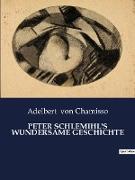Französischer Tanz und Tanzmusik in Europa zur Zeit Ludwigs XIV.: Identität, Kosmologie und Ritual
BücherAngebote / Angebote:
Der Tanz war eines der bedeutendsten Medien, um die Grandeur des französischen Königs Ludwig XIV. zu kommunizieren. Zeitgenossen sahen ihn als geradezu synonym mit dem Ausdruck französischer Identität an. Die europäische Tanzkultur war daher bald stark von der französischen dominiert. Doch wie wurde der dem französischen Tanzstil innewohnende Kommunikationscharakter im Ausland rezipiert?
Indem sie semiotische, hermeneutische und anthropologische Elemente verbindet, beschreibt und analysiert die Studie, wie mittels Barocktanz Inhalte vermittelt wurden, um welche Inhalte es sich dabei handelte und wie sie verstanden oder missverstanden wurden. Diskutiert werden unter anderem die Ballets de cour unter Ludwig XIV., Ballette in französischen und italienischen Opern der zweiten Hälfte des 17. Jahrhunderts, Gesellschaftstanz in Frankreich, Deutschland, England und Italien sowie die Übernahme von französischen Tanzformen in die italienische Instrumentalmusik des späten 17. Jahrhunderts. In allen untersuchten Fällen erweist sich Tanz als eine Form symbolischer Kommunikation, die geeignet ist, soziale, ideologische und nationale Identitäten im Europa zur Zeit Ludwigs XIV. zu bestimmen.
***
Dance was one of the most important means of conveying the granduer of the French court under Louis XIV. It was used to such an extent to present the fame of the King and of the French state which he embodied, that contemporaries generally considered it practically synonymous with the expression of French identity. European dance culture was thus soon dominated by that of France. But how did other countries react to the implicit communicative nature of the French dancing style?
Combining semiotic, hermeneutic and anthropological elements, this study describes and analyses the ways in which meanings were conveyed in baroque dance culture, what these meanings were, and how they were understood or misunderstood. Topics discussed include the ballets de cour under Louis XIV, ballets in French and Italian opera in the second half of the 17th century, formal dancing in France, Germany, England and Italy, and the adoption of French dance forms in late 17th-century Italian instrumental music. In all the areas examined, dance is shown to be a form of symbolic communication suited to the determination of social, ideological and national identities at the time of Louis XIV.
Lieferbar in ca. 5-10 Arbeitstagen




